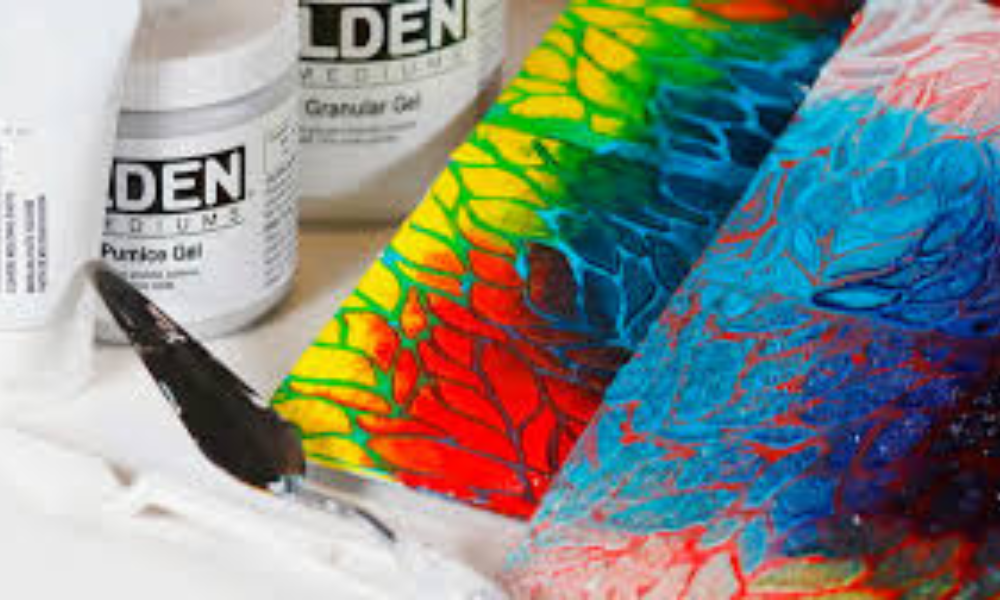Achieve Stunning Gloss with Acrylic Gloss Medium
Acrylic paints are widely loved for their versatility, quick drying time, and vibrant colors. However, one of the greatest advantages of using acrylics is their compatibility with different mediums that can enhance their properties. One such medium is the gloss acrylic medium, which allows artists to create stunning, glossy finishes that elevate their artwork. If you want to make your paintings stand out with a shiny, reflective surface, using a gloss medium is the perfect solution.
In this blog, we’ll explore how to use acrylic medium to achieve a glossy finish, the steps involved, and some key tips for getting the best results.
Understand Gloss Acrylic Medium
Gloss acrylic medium is a clear, gel-like substance that can be mixed with acrylic paint or applied on top of dried paint. It enhances the overall sheen and gives your artwork a shiny, polished look. Unlike varnishes, which are often used at the end of the painting process, gloss medium can be mixed with paint to adjust its texture and finish during the painting process.

Steps to Create a Glossy Finish with Acrylic Medium
1. Choose the Right Gloss Medium
The first step is selecting the appropriate gloss medium for your project. There are many options available, but make sure to choose a gloss medium that is compatible with your acrylic paints. Gloss mediums come in various consistencies, from liquid to gel. Liquids work well for mixing directly with paint, while thicker gel mediums are perfect for building texture and adding extra sheen
2. Mix Gloss Medium with Acrylic Paint
One of the most common ways to create a glossy finish is by mixing the gloss medium directly into your acrylic paint. Here’s how you do it:- Mixing Ratio: Start by mixing equal parts of acrylic paint and gloss medium. You can adjust this ratio depending on the level of gloss you want. The more gloss medium you add, the shinier the final result will be.
- Blend Well: Ensure the paint and gloss medium are thoroughly mixed to avoid streaks or uneven finishes. The medium will slightly thin the paint, making it easier to spread and apply smoothly.
- Apply Normally: Once mixed, apply the paint to your canvas or surface as you normally would. The medium will enhance the colors and give them a glossy shine.
3. Apply Gloss Medium as a Top Coat
If you want to keep your original paint texture but still achieve a glossy finish, you can apply the gloss medium as a top coat after your painting is completely dry. This method is similar to varnishing but can give a more subtle and smooth glossy appearance.
- Thin, Even Coats: Use a soft, wide brush or foam applicator to apply thin, even layers of gloss medium across the surface of your painting.
- Multiple Layers: For a higher shine, you can apply several coats, allowing each layer to dry fully before applying the next. The more layers you add, the shinier the finish will become.
- Drying Time: Be patient and allow each coat to dry fully. This ensures that your final glossy layer will be smooth and reflective without any streaks or bubbles.
4. Use Gel Medium for Extra Texture and Shine
If you want to add texture to your painting while creating a glossy effect, you can use a gloss gel medium. Gel mediums are thicker than liquid mediums and are excellent for creating 3D effects or thick brush strokes with a high-gloss sheen. Here’s how:- Apply Directly to Canvas: You can either mix the gel medium with paint or apply it directly onto your canvas to create raised areas.
- Textured Finish: As the gel dries, it retains its raised form, and once dry, it will have a glossy finish that enhances both the texture and shine of your artwork.
5. Avoid Mixing with Matte Mediums
If your goal is to achieve a high-gloss finish, avoid mixing gloss medium with any matte or satin mediums, as these will dull the glossy effect. Stick to pure gloss mediums for the best results.
6. Use the Right Tools
When applying a gloss medium, whether mixed with paint or as a top coat, it’s important to use the proper tools:- Soft Brushes: Use soft, flat brushes or foam applicators for even application. These tools help you apply the medium smoothly without leaving visible brush strokes.
- Roller for Large Surfaces: If you’re working on a large canvas, consider using a small roller to apply the gloss medium evenly across the entire surface.

Tips for Achieving the Best Glossy Finish
- Work in Thin Layers: When applying the gloss medium as a top coat, work in thin layers to avoid streaks or uneven patches.
- Allow Each Layer to Dry: Make sure to give each coat enough time to dry before applying another layer. This prevents cloudiness or dullness in the finish.
- Protect Your Artwork: If your painting will be handled or exposed to moisture, consider using a gloss varnish in addition to the medium to protect your artwork from dust, scratches, and UV damage.
Why Use Gloss Acrylic Medium?
Using gloss acrylic medium enhances the overall appearance of your artwork in several ways:- Vivid Colors: Gloss medium enhances the vibrancy of your acrylic colors, making them look richer and more vivid.
- Smooth Finish: It creates a smooth, polished surface, giving your work a professional finish.
- Versatility: It allows you to create textures, layer effects, and high-shine surfaces, adding depth and dimension to your paintings.
- Longevity: It can help preserve the colors and protect your painting from damage over time.

